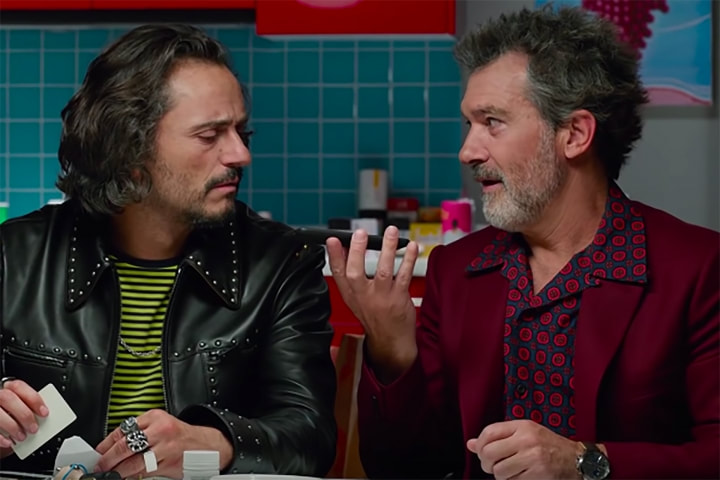Almodovar is at a transcendent peak in the scenes of Mallo’s childhood. As a kid of 8 or 9 played by Aier Flores, his mother moves him to a poor village where they literally inhabit a hole in the ground. Their cave/home is stark white rock walls and ‘skylights’ when it’s first introduced, but after several scenes back in the present day, Mallo returns to his childhood and it’s been made as cozy as any four-walled edifice. These sequences are pure Edenic perfection between a boy and his beloved mother, and they contain grace notes so viscerally imagined that they leap off the screen. Almodovar includes moments of average life here as well as significant turning points and both are treated with equal weight, like every second spent carried the potential for serious impact or low-level contentment, all of which are worth revisiting. It makes the viewer long for a coming-of-age story from Almodovar, if he hasn’t done one of them already.
Those childhood memories of undiluted, primitive grace clash with Mallo’s present, especially in the comparison between living spaces. The natural curves and structure-function simplicity of his old cave have been replaced by the sharp corners and abstract art of his apartment. That’s not to say this is a film about a man losing and regaining something he lost in his youth, because it’s deeper than that, but still, the contrast is sharp. What Mallo has retained from his childhood is a curiosity and an openness that, at this low-stakes stage of his life, means taking up heroin. There have been a lot of cinematic representations of heroin use, but here, Banderas communicates how uncomfortable Mallo is by treating the use of powerful narcotics as a return to normalcy. He’s not in the throes of chemically-induced ecstasy, but he’s instead freed from his aches and pains and can now stand and sit without pain. The promise and brightness that characterized his youth have been replaced by being trapped in the prison that is his body, with the key a brown powder that people his age probably shouldn’t take up as a new hobby.
Outside of the exceptional childhood scenes, Banderas is onscreen for the whole of the film. Too easily dismissed in America as the star of B-movies or a cartoon voice, his long collaboration with Almodovar yields a career-defining performance here. Never showy, Banderas underplays all the ennui and nostalgia and longing the character feels while making each emotion apparent through his carriage and his body language. It’s a quiet performance that loses none of its power for its restraint. In the childhood portions, Cruz is a killer in her handful of scenes as a woman in a kind of partnership with her young son, like she needs his support as much as he needs hers. Her disappointment at their lowly digs is buoyed by his optimism in a way that makes her more endearing as a mother and wholly worthy of adulation by her grown son decades later.
One wouldn’t expect a character study like Pain and Glory to have a significant spoiler, but this one does. A late reveal completely reframes and elevates the entire film for the better, and it was already pretty good before said reveal. Almodovar surprises the viewer who expects something completely different, and the viewer who’s seen everything he’s ever made. This is a beautiful piece of work by a director who proves to be as able to work in the medium of coke as he is in the medium of heroin. A-

 RSS Feed
RSS Feed